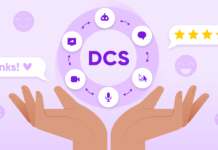Social media plays an important role in our world today — more so than just making it easy to stalk friends, follow celebs, and post pictures of your food. These networks have become an essential tool in building a brand, generating leads, and creating customer loyalty.
In the 2014 Social Media Marketing Industry Report, which compiled answers from over 2,800 marketers, 92% of respondents agreed that social media is important to their business. The benefits these marketers overwhelmingly reported ranged from increased traffic (84% reported this result with as little as six hours per week spent on social media strategy), reduced marketing expenses, and better search engine rankings.
But building a company presence on social media isn’t enough. Marketers need to craft a clever strategy to get the most out of these platforms. If you need help getting started, here are five pitfalls you should definitely avoid in your social media marketing plan.
1. Overgeneralizing
Even though the wide reach of social media can be tempting, you shouldn’t necessarily be trying to appeal to everyone. If you cast your net too wide by making posts general and applicable to anyone, you run the risk of being bland or unrelatable. Your tweets, posts, and pictures should illustrate an identity. Focus on your niche market, and plan your strategy with them in mind.
The key to avoiding overgeneralization is understanding your audience. Think about the keywords that relate to the passions of those who invest in your product and look at how thought leaders in this arena are engaging on social media. There are also tons of marketing tools out there to help you analyze your followers’ behaviors. Knowing who is interested in your product and who is following your posts will help you develop engaging content that will keep them coming back.
2. Trying Too Hard to Appeal to Potential Customers
You don’t have to look far to find some cringe-worthy posts in which companies try too hard to be current or cool. By trying to be edgy when your product doesn’t call for it or using slang when it doesn’t make sense with the service you offer, your clients may feel that you’re desperate for their attention, which in turn will drive them away.
The key to crafting a post that reads as effortless and memorable is to stick to a tone that characterizes your company. Think about the words that your audience would use to describe what you do. Does their language tend to be formal? Full of industry-specific jargon? What kind of adjectives would they use in a review of your service? Use your community’s language (which, in some cases, will involve slang) to write your posts. The Distilled blog offers great advice on cultivating a tone for your social media presence.
3. Misusing Hashtags
If you think there’s no wrong way to use a hashtag, you shouldn’t be using them. Some general rules to follow: don’t use too many hashtags in your posts or tweets, don’t make the hashtags too long (#whocanevenreadahashtagthatisthislonganyway), and be sure that your hashtag cannot be misinterpreted.
You need to use fully thought out hashtags that are relevant, catchy, and will pull in social media users without hijacking already existing hashtags or ones that people are using to talk about another topic. According to Buffer, using 1–2 hashtags will lead to 21% higher engagement than using 3+ on Twitter. The general rule of thumb they advocate is using 1–3 hashtags per post across all platforms.
4. Overposting and Underposting
Finding the sweet spot when it comes to the amount of content you post on social media may be tricky, but it is essential to your marketing strategy. When you underpost, you’re not catching the eyes of many potential consumers and run the risk of becoming invisible, making it difficult for potential consumers to find you. However, when you overpost, you might turn off clients because you’re “spamming” their feeds, which may cause them to unfollow you.
There’s no definitive posting amount recommended, but Hubspot suggests that small companies limit their Facebook posting to about 1-2 times a day, while Buffer advises tweeting 3-5 times a day to get the most out of each Tweet. You may have to experiment to find the sweet spot for your company, varying how often and when you post, and keeping track of what types of posts lead to more engagement. More importantly, focus on the quality of your presence and not just the quantity. Retweet or share posts from companies and customers and respond to and interact with your followers. Also, vary the kind of media you share — think pictures, links, quotes, and more, to keep followers interested and engaged.
5. Using the Wrong Social Media Channels
Be wise when choosing the social media platforms you will be using. Each of these tools takes a considerable amount of time to master, so maximize your ROI by putting your effort behind platforms that you know your customers use. For instance, Facebook and Pinterest tend to draw mostly women, while LinkedIn is more popular among men. Twitter and Instagram particularly appeal to the 18- to 29-year-olds. Twitter also appeals to a higher income–audience, as do Pinterest and Linkedin.
Also, think about the type of content you are going to post. If you will be sharing a lot of pictures, Instagram, Facebook, and Pinterest will be your best friends. Short posts do best on Twitter, while longer blog posts should be saved for platforms like Linkedin and Facebook.
If you only have the time or budget to select one platform, pick Facebook for longer content or conversation generation, and Twitter for a higher volume of short updates. These two sites will be the foundation to your social media success.
Brand refers to the way consumers view a company, and favorable brand recognition leads to customer retention. With social media currently at the forefront of customer communication channels, crafting a solid strategy is essential. Staying away from overgeneralization, trying too hard to appeal to potential leads, misusing hashtags, mis-posting, and using the wrong channels will help you create a winning social media strategy.





